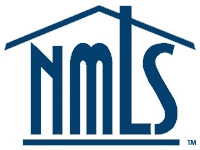Why Get a Home Inspection
Why get A Home Inspection When Buying A Home
Getting a home inspection when buying a home is a crucial step in the home-buying process. Here’s why it’s so important:
- Identify Hidden Issues: A home inspection can uncover problems that aren’t immediately visible, such as structural issues, electrical or plumbing problems, or signs of mold and pests. This can help you avoid buying a property with significant hidden defects.
- Negotiation Leverage: If the inspection reveals issues, you can use this information to negotiate repairs with the seller or request a price reduction. This can potentially save you money and ensure that the home is in better condition before you complete the purchase.
- Informed Decision: The inspection provides a detailed report on the home’s condition, helping you make an informed decision about whether to proceed with the purchase, ask for repairs, or even walk away if the problems are too severe.
- Safety and Maintenance: It helps identify safety hazards, such as faulty wiring or structural weaknesses, ensuring that you’re aware of any issues that could impact your safety or require immediate attention.
- Future Planning: The inspection report can help you plan for future maintenance and repairs by highlighting areas that may need attention or updates in the near future. This can be particularly valuable for budgeting and planning.
- Peace of Mind: Knowing that a professional has thoroughly examined the property can provide peace of mind, confirming that you’re making a sound investment.
In summary, a home inspection is an essential tool for protecting your investment, ensuring safety, and making informed decisions in the home-buying process.
Why Get A 4 Point inspection When Buying A Home
A 4-point inspection is often required by insurance companies, especially when you’re buying an older home or if you’re looking to get a homeowner’s insurance policy. Here’s a quick rundown of why it’s important:
- Insurance Requirements: Many insurance companies require a 4-point inspection to determine the condition and safety of the home before issuing a policy. This is particularly common for homes older than 30 years.
- Identify Major Issues: The inspection focuses on four critical areas—roof, electrical system, plumbing, and HVAC (heating, ventilation, and air conditioning). By assessing these components, the inspection helps identify any significant issues that could lead to costly repairs.
- Risk Assessment: Insurance companies use the information from the inspection to assess the risk of insuring the property. If the inspection reveals potential hazards or outdated systems, they might adjust your premium or require repairs before issuing coverage.
- Negotiation Tool: If significant problems are found, you might be able to negotiate repairs or a price reduction with the seller, potentially saving you money and ensuring that the home is in better shape before you finalize the purchase.
- Safety and Maintenance: Even if not required by insurance, a 4-point inspection can give you peace of mind about the home’s major systems, helping you plan for future maintenance or repairs.
In short, it’s a way to ensure that you’re aware of any potential issues with the home’s critical systems and to help you meet insurance requirements.
Why get a wind Mitigation Inspection When Buying a Home
A wind mitigation inspection is important when buying a home, particularly in hurricane-prone areas, for several reasons:
- Insurance Savings: This inspection can potentially lower your homeowner’s insurance premiums. Insurance companies often offer discounts for homes that have features designed to mitigate wind damage, such as impact-resistant windows, reinforced roofs, or certain roof shapes. The inspection helps document these features, which can lead to significant savings on your insurance.
- Risk Assessment: The inspection evaluates how well the home is equipped to handle high winds and severe weather. It assesses factors like the strength of the roof, the type of roof covering, the quality of the home’s windows and doors, and the presence of storm shutters or other protective features. This can give you an idea of how well-protected the home is against wind damage.
- Insurance Requirements: In some areas, particularly those prone to hurricanes and severe storms, insurance companies may require a wind mitigation inspection as part of the policy application process. They need to understand the wind-resistance features of the home to determine coverage and pricing.
- Future Protection: Knowing the home’s wind mitigation status can help you plan for future upgrades or repairs. If the inspection reveals weaknesses, you can take steps to improve the home’s resistance to wind damage, which can be particularly valuable in storm-prone regions.
- Peace of Mind: Understanding the home’s vulnerability to wind damage can provide peace of mind, knowing that the property has been evaluated for its ability to withstand severe weather conditions.
Overall, a wind mitigation inspection helps you understand the home’s resilience to wind damage and can result in lower insurance costs, making it a valuable part of the home-buying process in areas susceptible to hurricanes and strong storms.














